
Mountain Streams --Vol.2--
Is Royal Coachman an all-round fly?

Royal Coachman.

Big rocks come in sight from the middle of Nishinomata, Kinpusan River.
I had used particular flies for Japanese traditional style of fly fishing for sweet fish and white minnows in the current since my childhood. Therefore, I had no hesitation in trying such a bright pattern as Royal Coachman, although its colour was not my taste. On the contrary, I was much interested in the fact that the fly in a little unrealistic colour can catch fish. In those days it was not uncommon that even anglers who had some knowledge of fly fishing said, "Japanese fish will never bite Royal Coachman because there is no insect in that bright colour in the mountain stream here. Only rainbow trout, foreign fish have been caught with it." To my eye, however, Japanese traditional fly, which they admired and was made by just tying pheasant small wing pointer feather, looked much far from any living creature.

Devil Gnat. I tried to make a new fly to solve this problem between castings. Thus Devil Gnat was born.
The Birth of Devil Gnat
The Kimpusan River, including west and east tributaries and the main stream where both tributaries flowed down together, was mainly covered with white granite. However, the whole river did not look pure white but was dotted with many brown stones. Here Royal Coachman, using red hackle, was sometimes hard to see in the stream. Although I had not got a slightest doubt about the great power of Royal Coachman, the trouble was that it could not be seen distinctly. I wanted a new fly I could see more clearly. Since stones in the river bed are white and white foam covers a large part of surface, I should make a black fly, the contrast colour of white, so I thought. Such simple idea encouraged me to try Black Gnat. At that time Black Gnat was mainly made in American style with black chenille for its body. That was why it began to sink after its several successful castings.Originally Gnat had not got a tail. But as I wanted the fly to have more buoyancy, so I added hackle fibres for a tail. Furthermore, I tied polypropylene yarn around the body because it is a very buoyant material. Hackles were noticeably made in black. As for wings, at first I tied natural duck both in the upright style and the divided style, then I chose the divided wings because it enabled more stability on the water surface and more buoyancy.
Fortunately, Devil Gnat was very successful not only on the spot of white granite in the river bed but also of brown stones. On the latter spot, all I had to do was to cast the fly into the white foam in the head of the small pool and I could see the fly more distinctly than I had ever desired.

A nice char under a burning sun in hot Summer
Can the fly colour change the fish response?
I noticed one thing just after using Devil Gnat. Surely fish responded to it in different way from before. Fish came up to the fly and bit it at lower speed than to Royal Coachman. That does not mean fish was slow-moving but it looked very calm and relaxed.It was not my imagination because fish suddenly moved quickly when I changed Devil Gnat into Royal Coachman. What changed fish response to the fly?
At first I thought what fish usually eat could be the key. Actually, all char's stomachs were mainly occupied with black ants. Most of other baits there were also black. Because the char usually eats black baits, it responds to the black fly well, has got no doubt about it and eats it slowly and surely in a relaxed way. This was my first conclusion. But this theory can be applied to Devil Gnat but not to Coachman because the latter can catch fish well, too, even though fish respond to it in different way.

There were so many char and yamame trout in small tributaries.
Black Coachman

Black Coachman.
I tried to make another new fly under the pressure of necessity. The new fly should have good points of Royal Coachman and also be seen as clearly as Black Gnat. Thus I tried to tie black Coachman.
This fly is nothing but a colour variation of Royal Coachman. I was much interested in fish response to the different colour fly of the same shape. This pattern has made a remarkable achievement since my first trial, just like Devil Gnat. To my eye, fish respond to it a little more slowly than to Royal Coachman but fish hold it firmly. Its good hooking performance proves that.
What really makes the differences between the two? Somehow, I felt that the colours of white, red and peacock herl, three symbol colours of Royal Coachman were a key factor. If one of these colours is used a lot in the fly, fish will respond violently. That was my impression in those days.

A big char was caught by #10 Black Coachman.This size was the biggest around those area, but we could find so many char.

The view of Higashinomata right after the rainy season.
Is Peacock Cocaine?
After a while, Mr. Takeshi Abe, a professional fisherman who also had long been absorbed in fishing char in Tohoku district, told me an interesting story about peacock. Learning from his long experience of using Japanese traditional method of fly fishing, he found char came up quickly to the Japanese traditional fly of peacock herl body. He used this type of fly only when char seldom appeared. Otherwise, he said, the Japanese traditional fly of brown fern dubbing body would be better in order to make char come up slowly. According to his advice, we could burn peacock with cigarette if we had not got that fly of brown fern dubbing body.Since then I have noticed many interesting happenings around me about white, red and peacock. Actually, those have formed one of my basic ideas how to design the pattern, whichever genre of the fly it belongs to.
-- To be continued --
- NET SHOP INFORMATION
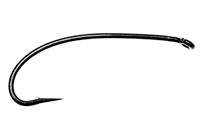
SL6 Black Spey Hooks
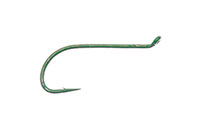
DU3 Limerick Spinner Hooks
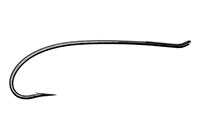
SL4 Single Bartleet Hooks
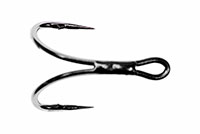
XD1 Tube Fly Double Hooks
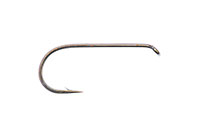
DD2 Flat Perfect Hooks
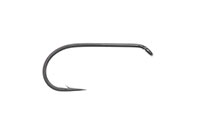
DD1 Black Terrestrial Hooks
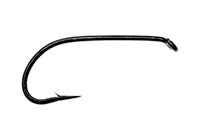
TD4 Old Limerick Wet Hooks
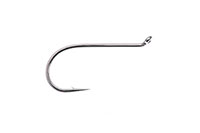
DU1 Silver May Hooks
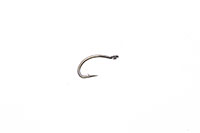
MU1 Flat Midge Hooks
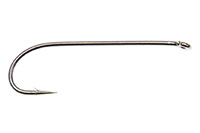
LD3 Long Limerick Hooks
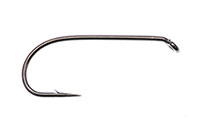
TD2 Summer Sproat Hooks
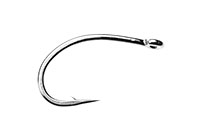
XS1 Tube Single Silver Hooks
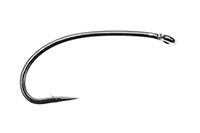
TD6 Siver Sedge Hooks

SL5 Black Spey Hooks

DU3 Limerick Spinner Hooks
- TROPHY CLUB
- FLY SHOW
- EXHIBITION
- MASTERS`
- FLY DRESSING CONTEST Archives
- TRAVELLER Archives
- TACKLE IMPRESSIONS Archives
- ANGLERS` PHOTO GALLERY Archives
- ----------------------------------------------
- トロフィークラブ
- フライショー
- エキシビション
- マスターズ
- フライドレッシング・コンテスト・アーカイヴ
- トラヴェラー・アーカイヴ
- タックル・インプレッション・アーカイヴ
- アングラーズ・フォトギャラリー・アーカイヴ
株式会社サワダ 185-0021 東京都国分寺市南町3-13-4
SAWADA'S INC. 3-13-4 Minamicho, Kokubunji, Tokyo 185-0021, Japan
写真・ドキュメントの無断転載を禁じます。
All the images and documents found on this site are owned by Ken Sawada and may not be used without permission.
But, link to this site is FREE.
Copyright © 2000 - 2024 SAWADA'S INC.. All rights reserved.
SAWADA'S INC. 3-13-4 Minamicho, Kokubunji, Tokyo 185-0021, Japan
写真・ドキュメントの無断転載を禁じます。
All the images and documents found on this site are owned by Ken Sawada and may not be used without permission.
But, link to this site is FREE.
Copyright © 2000 - 2024 SAWADA'S INC.. All rights reserved.
